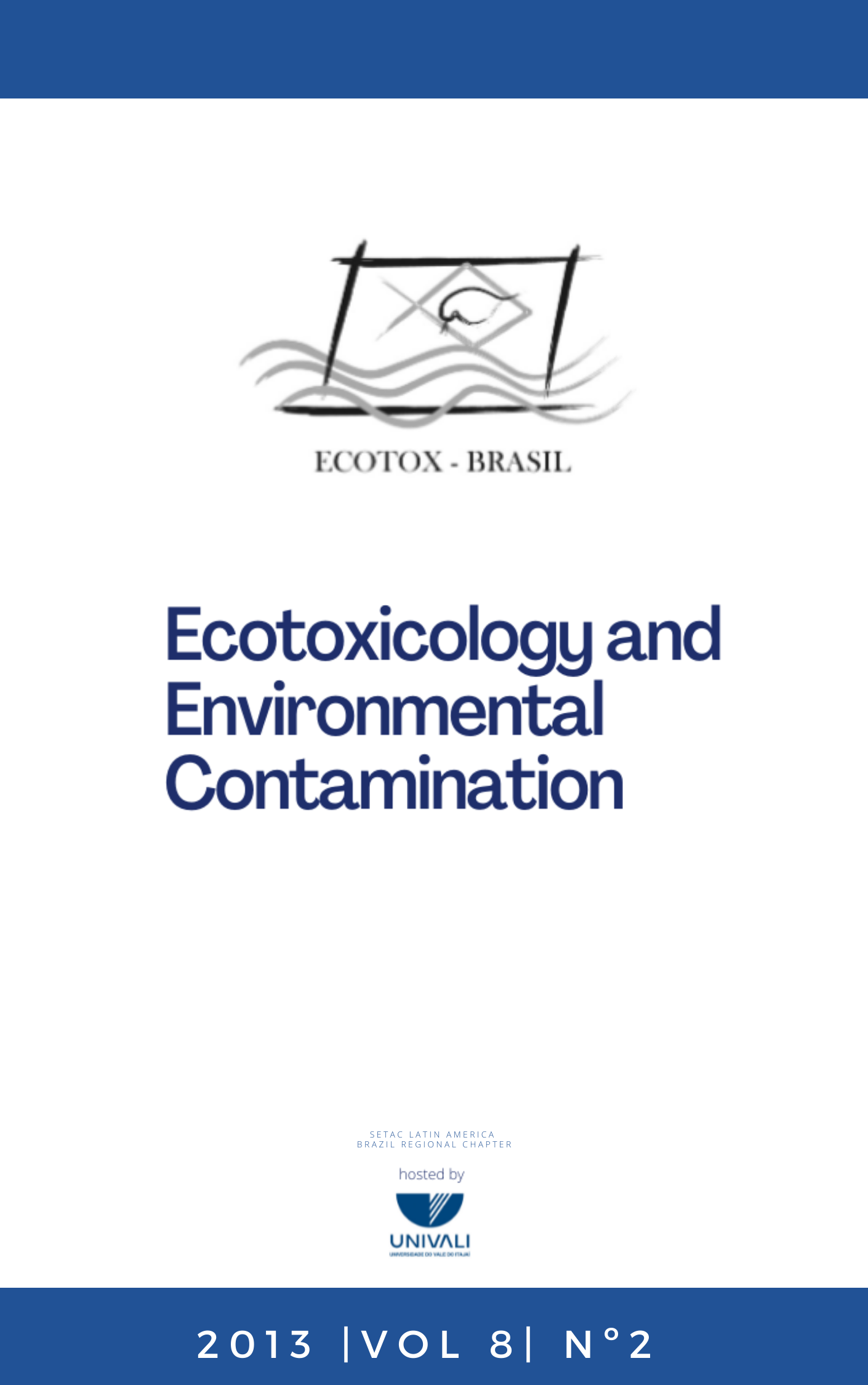Motionless of snail Hydrobia ulvae (Pennant) as response to sediment toxicity and its consequences for the post-exposure feeding
DOI:
https://doi.org/10.5132/eec.2013.02.011Resumen
Post-exposure feeding and motionless may be useful endpoints for assessing toxicity. The present study aimed to examine (i) the immobility of the estuarine snail Hydrobia ulvae resulting from short-term exposure to copper-spiked sediment, and subsequently, (ii) the potential application of post-exposure feeding (indirectly measured as pellets excreted) as an ecotoxicological response associated with motionlessness. Mobility and post-exposure feeding were influenced by copper contamination. Motionless was noticeable above the concentration of 200 μg Cu g-1, where 40% of the organisms were inactive. Practically all the organisms remained active at the two lowest concentrations: 40 (control) and 60 μg Cu g-1. For 400 and 800 μg Cu g-1 the motionless was generally higher than 50%. Mortality higher than 25% was observed at 200, 400 and 800 μg Cu g-1, with values of 27, 40 and 60%, respectively. The feeding inhibition values showed an increasing inhibition from 20% at the lowest concentration (60 μg Cu g-1), up to 59% at 400 μg Cu g-1; at concentration of 800 μg Cu g-1, although the physical activity inhibition had reached 67%, the post-exposure feeding was 1.5 higher in relation to the control. Probably, the starvation period due to motionless during exposure seems to increase the post-exposure feeding and egestion when food was provided; alternatively, increased pellet production could also indicate a detoxification process.
Descargas
Descargas
Publicado
Cómo citar
Número
Sección
Licencia
Copyright © 2006 ECOTOX-Brasil
Copyright notice: It is a condition for publication that manuscripts submitted to this journal have not yet been published and will not be simultaneously submitted or published elsewhere. By submitting a manuscript, the authors agree that copyright for their article is transferred to the Sociedade Brasileira de Ecotoxicologia (ECOTOX-Brasil) if and when the article is accepted for publication. The copyright covers the exclusive rights to reproduce and distribute articles, including reprints, photographic reproductions or any other reproduction of a similar nature, including translations. No part of this publication may be reproduced, stored in a retrieval system or transmitted in any form or by any means, electronic, mechanical, photocopying, recording or otherwise, without permission of the publisher.
Notice: While every effort is made by the EEC, editors and editorial board to see that no inaccurate or misleading data, opinions or statements appear in this journal, they wish to make it clear that the contents of the articles and advertisements published herein are the sole responsibility of the contributors or advertisers concerned. Accordingly, the EEC, the editorial board and editors and their respective employees, officers and agents accept no responsibility or liability whatsoever for the consequences of any inaccurate or misleading data, opinion or statement.




